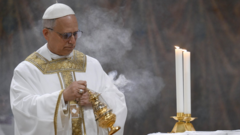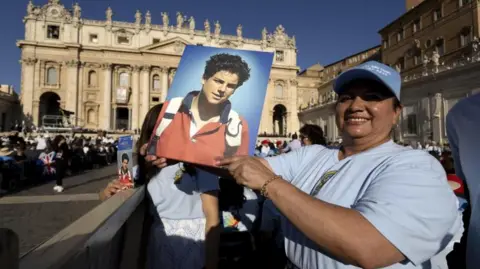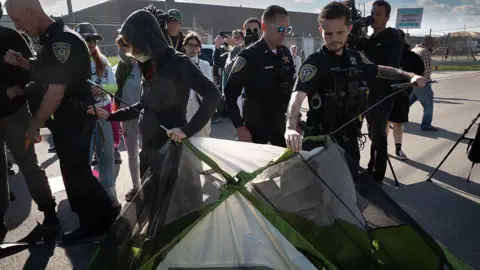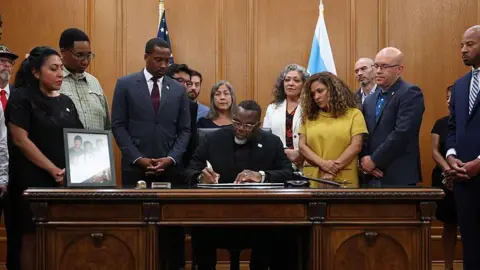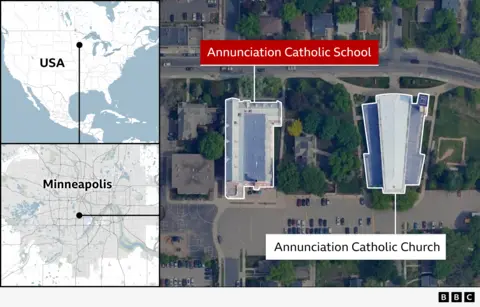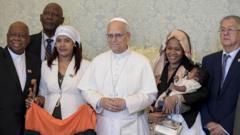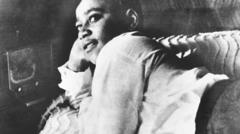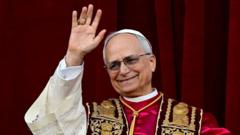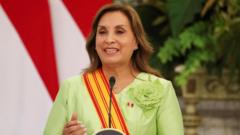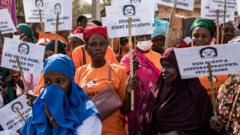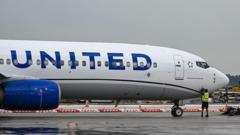In the wake of his election, Pope Leo XIV, previously known as Robert Francis Prevost, greeted the crowds from St Peter's Square with a warm smile, ushering in a new chapter for the Catholic Church. After his first public appearance, he returned to the Sant'Uffizio Palace, where he was met by enthusiastic staff and well-wishers, including a young girl who presented him a Bible to bless and sign. "Of course, though I have to try out my new signature," he remarked, showcasing the transition from his old identity to his new title as pontiff.
As Pope Leo continues to settle into his role, observers note that the details of his leadership style remain elusive, making every choice he makes—ranging from his attire to accommodation—subject to scrutiny. His decision to wear a gold cross, a choice diverging from his predecessor's simple silver pendant, hints at a possible shift toward tradition as he navigates his new responsibilities. Additionally, his scripted homily to cardinals in the Sistine Chapel suggests a tendency to lean more on established customs.
In the upcoming days, Pope Leo XIV is poised to clarify his vision further during significant events, including an audience with the media and a formal inaugural mass in St Peter's Square, attended by world leaders. Many are keen to see if his message will reflect issues of social responsibility, similar to the themes addressed by Pope Francis in his inaugural homily.
Moreover, the new Pope's choice of residence will also play a pivotal role in signaling his direction. Following in the footsteps of previous popes, he may opt for the splendor of the Apostolic Palace, moving away from the more modest Casa Santa Marta where Pope Francis chose to live, a choice that was considered revolutionary.
Amidst these early revelations, the legacy of Pope Leo’s previous life as Robert Prevost is becoming more apparent, especially in Chicago and Peru—his adopted country. Heartwarming gestures, like a birthday card from Peru and videos of his fondness for local cuisine, have surfaced online, showcasing his enduring connections.
Public reactions have varied; while Chicagoans express surprise over the election of an American Pope, admiration for his humility and confidence is growing. As new followers ponder his leadership style, many hope he embodies the virtues of strong morality and spiritual leadership. As Pope Leo XIV embarks on this monumental journey, the coming days will undoubtedly provide further insight into his envisioned direction for the Catholic Church.
As Pope Leo continues to settle into his role, observers note that the details of his leadership style remain elusive, making every choice he makes—ranging from his attire to accommodation—subject to scrutiny. His decision to wear a gold cross, a choice diverging from his predecessor's simple silver pendant, hints at a possible shift toward tradition as he navigates his new responsibilities. Additionally, his scripted homily to cardinals in the Sistine Chapel suggests a tendency to lean more on established customs.
In the upcoming days, Pope Leo XIV is poised to clarify his vision further during significant events, including an audience with the media and a formal inaugural mass in St Peter's Square, attended by world leaders. Many are keen to see if his message will reflect issues of social responsibility, similar to the themes addressed by Pope Francis in his inaugural homily.
Moreover, the new Pope's choice of residence will also play a pivotal role in signaling his direction. Following in the footsteps of previous popes, he may opt for the splendor of the Apostolic Palace, moving away from the more modest Casa Santa Marta where Pope Francis chose to live, a choice that was considered revolutionary.
Amidst these early revelations, the legacy of Pope Leo’s previous life as Robert Prevost is becoming more apparent, especially in Chicago and Peru—his adopted country. Heartwarming gestures, like a birthday card from Peru and videos of his fondness for local cuisine, have surfaced online, showcasing his enduring connections.
Public reactions have varied; while Chicagoans express surprise over the election of an American Pope, admiration for his humility and confidence is growing. As new followers ponder his leadership style, many hope he embodies the virtues of strong morality and spiritual leadership. As Pope Leo XIV embarks on this monumental journey, the coming days will undoubtedly provide further insight into his envisioned direction for the Catholic Church.

